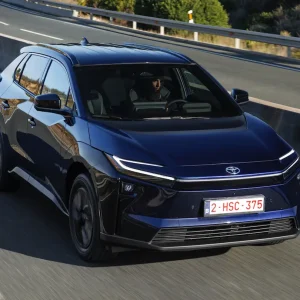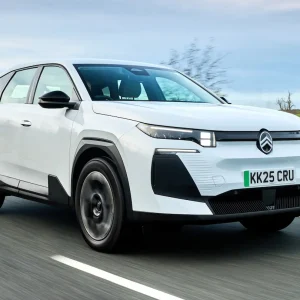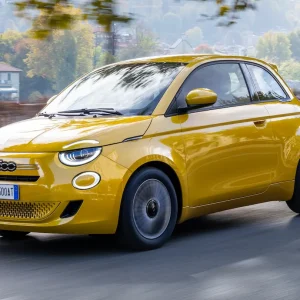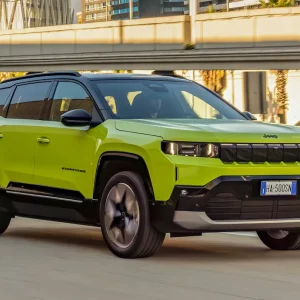With its unusual coupe-crossover styling, the first-generation C-HR was a breakthrough model for Toyota with 840,000 sales in Europe and up to 18,000 in the UK alone.
Previewed at a Toyota event we attended in Europe late last year, we have to admit the finished second-generation C-HR doesn’t look much different. We were told that Toyota’s customer research intimated that much of the original car’s appeal to customers was down to its looks. This time around, although the basic shape might look familiar, the new C-HR looks far more modern and bolder.
At the front, the new C-HR is the second model to get Toyota’s ‘hammerhead’ face, which on this car equals high-set, double-deck front LED headlights, and large lower grille with sharp detailing. There’s more sharp metalwork down the flanks, wide arches to give it a chunkier stance, and flush-fit door handles. At the back, there’s a high-set light bar, with the model name integrated into it.
Range-topping GR Sport models are offered with a bi-tone + paint finish, where the roof and rear quarters of the car are finished in gloss black. In our opinion, this works better with some colours than others.
Despite looking longer, this C-HR is actually 35mm shorter, and Toyota has taken 15mm from the height, although this version is 45mm wider, with the chunkier arches and bigger wheels equalling the more assertive stance.
Inside, there’s no more room for the C-HR, so while space and the driving position are fine in the front of this Toyota, rear space is more of a challenge. We like the curvy new dashboard design, that continues into the front doors. Made from quality-feeling, soft-touch plastic, it’s home to the new 12.3in digital driver display and a new central infotainment screen in 8in or the larger 12.3in screen we tried. Thankfully despite the big screen, Toyota have included enough physical controls for most drivers to be at home.
Tall rear adult passengers will be uncomfortable in the rear, with lack of legroom and headroom due to the sloping roofline. The boot, although practically shaped, is small and shallow with 388 litres if you go for the 1.8-litre engine. It drops further to 364 litres with the more powerful 2.0-litre.
Like all Toyota models, the C-HR is only available with electrified powertrains in 1.8 and 2.0-litre hybrid forms. There will however be a plug-in hybrid version available next month. Toyota is predicting that the 140hp, 1.8-litre, which develops 185Nm of torque, and a 0-62mph acceleration time of 10.2 seconds, will be the key seller for fleet. With the 2.0-litre producing 197hp, max torque of 206Nm, and 0-62mph acceleration in 8.1 seconds.
Mated with the latest evolution of Toyota’s e-CVT transmission, its slick and refined nature generally works well with the laid-back feel of the performance. However, both are less fun when asked to work harder, as both models get thrashier and noisier. We’re not convinced the power benefits of the 2.0-litre are worth the extra money over the 1.8.
The C-HR uses the same TNGA-C platform as the Corolla lower-medium car, but Toyota is claiming improved dynamics over that model. Changes are said to follow the set-ups of the Camry and RAV4, with the result being a compliant, comfortable ride – even with the 19in wheels fitted to our test car.
It is not as good at lower speeds where, despite the tall body, roll and control are tidy – but it’s no sports car and the steering could do with a touch more feel. When you need to stop, the brakes have plenty of feel.
Specifications are decent, with a choice of Icon, Design (expected to be the most popular fleet choice), Excel and GR Sport equipment grades. Despite all the standard kit, with prices starting at £31,290, the C-HR is not a cheap option.
Toyota C-HR 1.8 Hybrid Excel
P11D: £37,925
Residual value: 45.4%
Depreciation: £19,944
Fuel: TBC
Service, maintenance and repair: £2,179
Cost per mile: TBC
Fuel consumption: 60.1mpg
CO2 (BIK %): 110g/km (27%)
BIK 20/40% a month: £170/£340
Luggage capacity: 388 litres
Engine size/power: 1,798cc + 70kW motor/140hp





